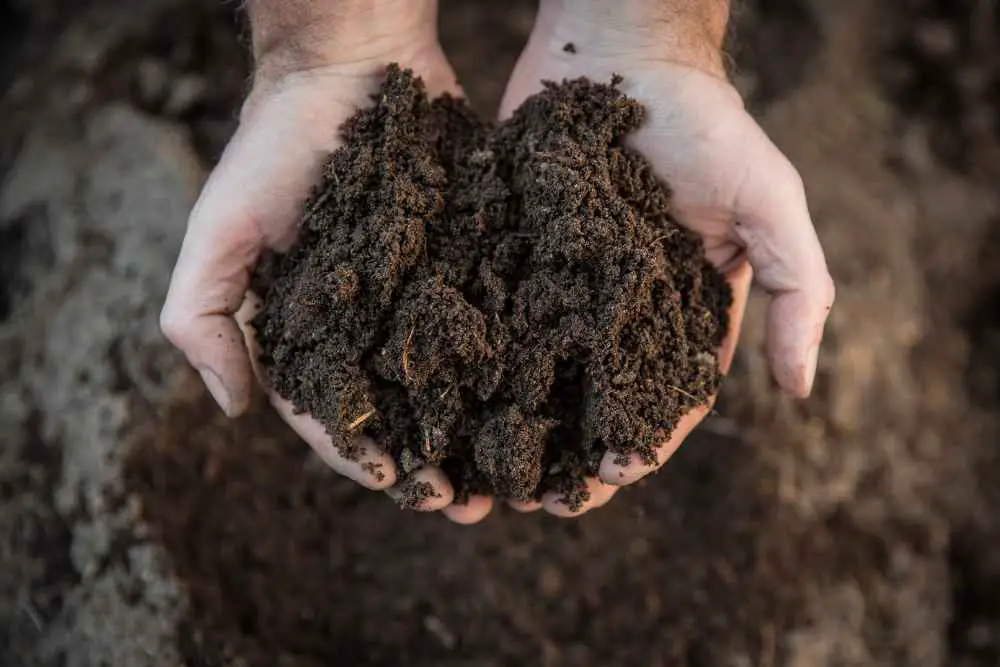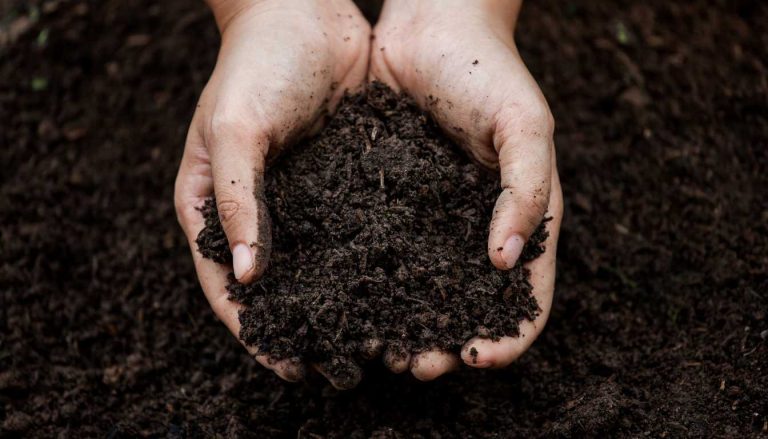Importance of Well-Drained Soil for Healthy Crops: A Comprehensive Guide
Well-drained soil is soil that allows water to percolate through it quickly and not pool. A well-draining soil has adequate space between its particles to permit the free flow of water and oxygen.
Since wet soil caused root rot and other diseases, well-draining soil is recommended for most plants. However, well-draining soil might be difficult to find, especially if you live in a region with clay soil that receives a lot of rain.
How do you make your soil drain better? You can improve your soil drain by adding organic material such as compost or well-aged manure (Worm Castings Organic Fertilizer, Yum Yum Mix fertilizer, Soil Mender Mineral Boost). Hilling (elevation), planting in raised beds, or using containers can also improve soil drainage. Adding a drainage system is yet another approach to improving the drainage of your land.
Premium Organic Potting Natural Soil Mix

Worm Castings Organic Fertilizer

Miracle-Gro Indoor Potting Mix

Miracle-Gro Seed Starting Potting Mix

“Well-draining soil” depends on the makeup of the soil currently in your garden. Sandy soils drain quickly. Furthermore, sandy soils are famously poor at retaining nutrients, necessitating extra fertilizer. Organic matter added to the soil will contribute to both counts.
Clay soils frequently retain too much moisture, squeezing out the oxygen between soil particles and resulting in a thick texture that roots find difficult to penetrate. Clay soils can break at the surface when dry, forming fissures that expose roots to the sun and arid heat. In order to maintain its moisture level, clay uses reverse osmosis to pull water OUT of plant roots as it dries.

Clay soil is sticky and heavy when wet and hard as a rock when dry. If you have clay soil and want to keep your tools and sanity, additives or raised beds are essential. Caliche is a mixture of calcium carbonate and clay. This mixture results in a layer of very difficult-draining white chalky alkaline clay. A caliche layer can be found 6 to 12 inches below the surface soil layer. Dealing with it is typically difficult, requiring a pickax and a fierce struggle of wills. Make sure to “push through” the caliche layer to the soil below when planting firmly rooted plants and bushes. This will significantly improve drainage through the hardpan.
How To Know If Your Soil Is Well-Drained?
Grab a handful of moistened soil and rub it between your fingers: if it feels gritty, it’s sandy; if it feels slimy, it’s clay. Another approach is to wrap a handful of soil into a ribbon in your hands, exactly like you would with modeling clay in kindergarten: if you can dangle the ribbon vertically without it breaking, your soil is predominantly heavy clay. If it forms a ribbon but breaks when dangled, it’s most likely only partly clay. If you just can’t roll it into a ribbon, it’s probably primarily sandy soil.
A 12″ square and 12″ deep hole should be dug. Add water to it. Fill it up once more after the water has drained out and use a ruler this time to measure the depth of the water. Check the depth once more to see how much it has decreased after 15 minutes.
To calculate the rate at which it will drain in an hour, multiply the difference by 4. Your dirt is well-drained if it drains out of the hole at a rate of 1 to 6 inches per hour. If it drains at a rate of less than an inch per hour, it is wet; if it drains at a rate of more than six inches per hour, it is dry.
Signs Of Well-Drained Soil
- Healthy plant growth with good root growth.
- The color of the soil is deep, bright and it is loose.
- Soil has enough room for plant growth.
- Soil keeps the moisture and it drains well.
- Even after heavy rain soil is keeping its shape.
- When soil is moist and it becomes a crumbly texture.
- Soil has a balanced pH range.
- The topsoil has a medium to dark brown color, earthworms or other helpful insects can readily be found and a hole two to three feet deep can dig.
Seven classes of natural soil drainage
1. Excessively Drained
Water evaporates quickly. Internal free water is usually extremely rare or extremely deep. The soils are typically coarse in texture. It has extremely high hydraulic conductivity or is extremely shallow.
2. Somewhat Excessively Drained
Water is immediately removed from the soil. Internal free water occurrence typically is quite rare or very deep. The soils are typically coarse in texture. It has high saturated hydraulic conductivity or is quite shallow.
3. Well Drained
Water is readily taken from the soil, but not quickly. The occurrence of internal free water is usually deep or very deep; the annual duration is not indicated. In humid climates, plants have access to water for most of the growing season. During most growing seasons, wetness does not limit root growth for long periods of time. The soils are mostly absent of deep to redoximorphic characteristics associated with moisture.
4. Moderately Well Drained
Water is removed from the soil gradually at various times of the year. Internal free water occurrences are often relatively deep and transitory to permanent. During the growth season, the soils are damp for a brief period of time inside the rooting depth.
5. Somewhat Poorly Drained
In order to keep the soil moist at a shallow level for prolonged durations of the growing season, water is gently removed from the soil. Internal free water often occurs in shallow to moderate depths, and it can be either temporary or permanent.
Low or very low saturated hydraulic conductivity, a high water table, additional water via leakage, or practically constant rainfall are all features that are frequently present in the soils.
6. Poorly Drained
Water is slowly removed, leaving the soil wet at a shallow level for long periods of the growing season. Internal free water is typically shallow to moderately deep and transient to permanent.
Soils with low or extremely low saturated hydraulic conductivity, a high water table, additional water from seepage, or practically continuous rainfall are all typical characteristics.
7. Very Poorly Drained
Water is removed so slowly that the soil becomes wet at shallow depths on a regular basis during the growing season or remains wet for extended periods of time. Internal free water might be shallow or very shallow, common or persistent.
However, the soil is not consistently wet right beneath the plow depth. There is frequently free water at a short depth. This water table is typically caused by low or very low saturated hydraulic conductivity, practically continuous rainfall, or a combination of these factors.
Whether your soil is too well draining or too slow draining, the solution is the same: add as much organic matter as possible to the soil. Compost, worm castings, well-rotted animal manure, coffee grounds, egg shells, peat moss, coconut coir, or leaf mold can all be used.
To improve air movement and drainage, very heavy clay soil should be amended with coarse sand. A well-draining soil keeps your plant’s roots from becoming soggy and allows air and oxygen to reach the roots. This is necessary for healthy root growth and nutrient uptake, which results in stronger and healthier plants.
- 29 Bucket Gardening Ideas for a Lush, Compact Garden - October 30, 2024
- 20+ Chic Boho Bedroom Ideas for a Cozy and Stylish Retreat - June 20, 2024
- 12+ Modern Boho Living Room Ideas to Create a Unique Oasis - June 10, 2024







